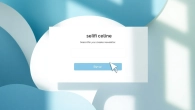
Effective Strategies on How to Reconnect with Old Contacts
Understanding the Importance of Reconnecting with Old Contacts
In the fast-paced world of networking and business, it’s easy for relationships to fade over time. However, reconnecting with old contacts can yield numerous benefits, whether you are looking to enhance your career, find new opportunities, or just rekindle a friendship. Understanding the importance of this process sets the groundwork for effective reconnection strategies. For actionable insights on how to reconnect with old contacts, read on.
Benefits of Networking
Networking is not merely a professional obligation; it is a vital component of personal and career growth. Reconnecting with old contacts can lead to:
- New Opportunities: Old contacts may have insights into job openings or collaborations that could benefit your career.
- Support and Guidance: Former colleagues or mentors can offer valuable advice based on their experiences.
- Resource Sharing: Contact networks often share information and resources that can help in problem-solving or innovation.
- Collaboration Potential: By reconnecting, new projects or partnerships may emerge that leverage your combined skills and networks.
Common Misconceptions
Despite the advantages of reconnecting, many people harbor misconceptions that can hinder their outreach efforts. Some of these include:
- It’s Too Late: Many believe that long periods of inactivity make reconnection impossible. However, most people appreciate renewed interest, no matter how much time has passed.
- I Don’t Have Anything to Offer: Even if you feel out of the loop, sharing your own updates can be valuable and can open doors for discussion.
- Networking is Just for Job Hunting: In reality, networking can be beneficial for many reasons, such as collaboration and mentorship.
Identifying Key Contacts
Not all contacts are created equal. Identifying which old contacts to reconnect with can streamline your efforts. Consider:
- Long-term Relationships: Focus on those with whom you had meaningful interactions.
- Mutual Benefit: Reach out to individuals who could provide or need support in their current endeavors.
- Diverse Connections: Look for contacts across different fields or industries to broaden your opportunities.
How to Reconnect with Old Contacts: Initial Steps
Choosing the Right Medium
Choosing the right method to reach old contacts is crucial for effective communication. Various platforms each have their pros and cons:
- Email: Best for formal introductions or updates. It allows for thoughtful communication, where you can share detailed messages.
- Social Media: Platforms like LinkedIn or Facebook can be more casual and approachable, making them good options for light touchpoints.
- Phone Calls: For close connections, a direct phone call can convey sincerity, but be mindful that not everyone prefers phone communication.
Crafting a Personalized Message
A generic message is unlikely to spark engaging conversations. Personalization can make your outreach more impactful:
- Reference Past Experiences: Mention specific memories or projects you worked on together to jog their memory.
- Acknowledge the Time Gap: A simple acknowledgment of the time since your last interaction can create a relatable context.
- State Your Intent: Being clear about why you want to reconnect will help set expectations and encourage a response.
Timing Your Outreach
Timing can be a critical factor in how your message is received. Consider the following:
- Holidays or Special Occasions: Certain times of the year naturally evoke a spirit of connection and gratitude, making them ideal for outreach.
- After Significant Life Events: If you know your contact may have recently experienced a change (new job, relocation), reaching out can feel timely and relevant.
- Regular Check-ins: Establish a routine for reconnecting with contacts periodically to maintain relationships over time.
Best Practices for Reestablishing Connections
Follow-up Strategies
Once you’ve made initial contact, following up can be crucial for maintaining the relationship. Employ these strategies:
- Time Your Follow-up: If you don’t get a response, wait a week or two before sending a friendly reminder.
- Express Gratitude: Always thank the contact for their time, regardless of the outcome of your communication.
- Handle Multiple Contacts: If reaching out to several people, keep a log to track whom you contacted and when, to avoid duplicate outreach.
Creating Value in Your Interactions
To make your reconnections worthwhile for both parties, focus on creating value:
- Offer help: Share resources, articles, or connections that may interest them based on your knowledge of their work or interests.
- Invite Collaboration: Suggest opportunities for working together on projects or events that align with both your interests.
- Host Events: Consider organizing informal gatherings or virtual meet-ups to bring together various contacts for networking and collaboration.
Utilizing Social Media Tools
Social media offers various tools and features to make reconnection easier:
- Updates and Statuses: Regularly update your profile to share recent developments in your career or personal life; this may prompt others to reach out as well.
- Engagement: Actively comment on or share contacts’ posts to maintain visibility and relevance in their network.
- Groups and Communities: Participate in relevant groups to find opportunities to engage with former colleagues or peers organically.
Overcoming Challenges When Reconnecting
Handling Awkward Situations
Reconnecting after a long time can sometimes lead to awkward moments. Here’s how to handle them:
- Acknowledge the Distance: If the silence feels uncomfortable, lightly acknowledge it in a humorous or casual manner to ease tension.
- Focus on the Positive: Direct the conversation to enjoyable past experiences or present interests instead of dwelling on the time apart.
- Keep it Light: Initial conversations should be informal and friendly without diving into heavy subjects to nurture comfort.
Dealing with Rejection
Even with the best intentions, not everyone will respond positively. Here’s how to manage rejection:
- Stay Professional: Regardless of the response, keeping a professional demeanor reflects well on your character.
- Learn from Experience: Reflect on the interaction to identify any areas for improvement, but avoid taking it personally.
- Keep the Door Open: If someone declines to reconnect now, expressing a desire to keep in touch for the future maintains the relationship.
Building Trust Again
Trust can take time to rebuild, especially if there’s been a significant gap in communication. Consider these approaches:
- Consistency: Regular contact helps establish reliability and shows your commitment to the relationship.
- Transparency: Be open about your motivations for reconnecting, helping to establish a foundation of honesty.
- Shared Experiences: Engaging in collaborative efforts can foster trust as you demonstrate your intentions through actions.
Evaluating the Success of Your Reconnection Efforts
Setting Goals and Expectations
Defining what success looks like is essential for measuring the outcome of your reconciliation efforts. Consider:
- Define Clear Objectives: Whether you want a specific job lead or simply to catch up, having clear goals will guide your interactions.
- Communicate Expectations: Be upfront about what you hope to achieve with the reconnection—this aligns both your aims.
- Flexible Approach: While having objectives is essential, remain open to unexpected opportunities that may arise from the interactions.
Measuring Engagement Levels
After outreach, evaluating how your contacts engage with your efforts helps assess connection quality:
- Responses: Tracking responses to your communications (or lack thereof) can indicate interest levels.
- Interaction Quality: Are conversations flowing freely? Engaged dialogues typically reflect strong connections.
- Willingness to Collaborate: If your contacts express interest in working together, it’s a positive signal of reestablished trust.
Adapting Your Approach Over Time
As you assess your efforts, being adaptable is crucial. Here are ways to adjust your approach:
- Solicit Feedback: Ask your contacts if there’s a preferred way they’d like to communicate moving forward.
- Adjust Frequency: Depending on interactions, you may need to increase or decrease your follow-up frequency to match their preferences.
- Modify Content Type: Experiment with the types of messages or offers you share, evaluating what gets the best responses.












Leave a Reply